Are you thinking of starting a ghost kitchen? It’s a great way to get into the food business without having to invest in your own space and equipment. This article will discuss what you need to know before you start a ghost kitchen. It will also cover everything from licensing and permits to insurance and marketing. By the end of this post, you’ll know exactly what it takes to get your ghost kitchen up and running!
What is a Ghost Kitchen?
A ghost kitchen, also known as a dark or virtual kitchen, is a restaurant operating space without a dining area. Operated by either an existing brick-and-mortar restaurant or a new business entirely, the focus of these kitchens is on delivery and takeout services. Ghost kitchens typically have one master menu that serves multiple online ordering platforms such as Uber Eats, Grubhub, and DoorDash for maximum reach.
The first ghost kitchens were developed in the United Kingdom, but they quickly caught on in the United States and other countries. In the past few years, ghost kitchens have become increasingly popular as a way for restaurants to increase their profits without having to invest in costly physical restaurant space [1].
How do ghost kitchens typically work?
Ghost kitchens, as their name suggests, are located in an out-of-the-way place, often a shared commercial kitchen space. Customers who order online will be directed to the ghost kitchen’s location, where they will pick up their meals or have them delivered by a third-party delivery service.
Since ghost kitchens don’t require physical restaurant space, they can operate with minimal overhead costs. This allows businesses to focus on providing quality food and excellent customer service without having to worry about costly overhead expenses such as rent or utilities.
Pros and cons of starting your own ghost kitchen
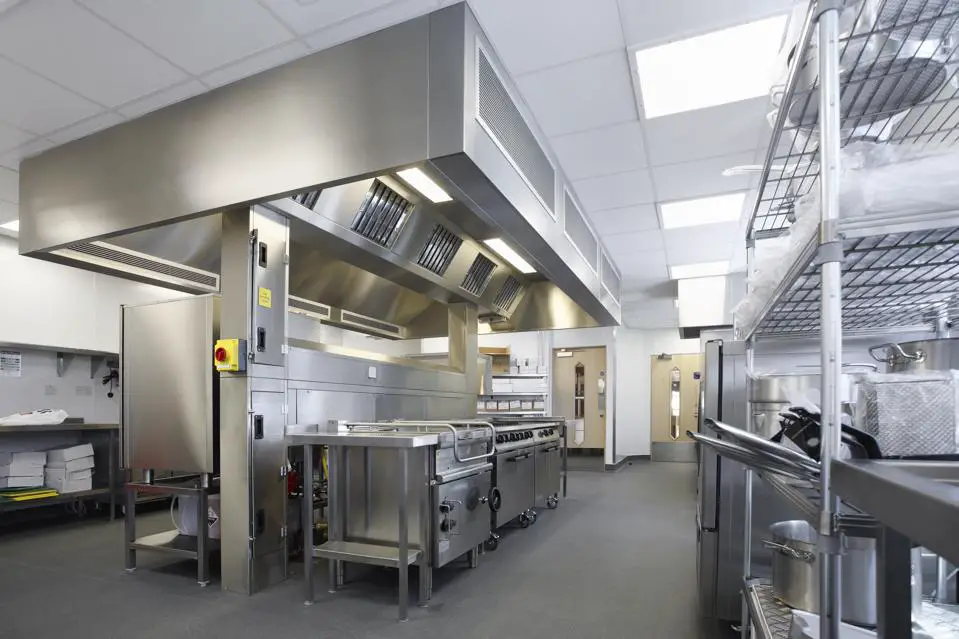
One of the great advantages of starting a ghost kitchen is that it requires significantly less capital than opening a restaurant. It’s much easier to test out new food concepts and experiment with different menus when you don’t have to worry about buying a space or outfitting it with expensive equipment. It also allows for greater flexibility in terms of staffing, since you may not need as many employees if your customers never come into your physical kitchen.
On the flip side, running a ghost kitchen can be difficult without the right resources in place. You’ll still need to invest in quality ingredients, advertising and marketing, staff training, and food safety protocols – all while trying to manage rising demand from online orders. In addition, you may be competing with larger players in the restaurant industry who can offer a greater selection of food or lower prices [2].
How To Start A Ghost Kitchen Checklist?
Rent A Commissary Kitchen Or Space
Finding the right space is one of the most important steps in starting a ghost kitchen. Your goal should be to find a space that’s affordable and has enough room for your equipment, staff, and inventory. You may also want to look into renting extra storage space if needed.
Secure A Business License & Permits
Before you can legally launch your ghost kitchen, you’ll need to register your business with the appropriate government offices and obtain any necessary licenses or permits. Research local zoning laws and health codes related to commercial kitchens as well as any other regulations specific to your area before moving forward.
Develop an engaging menu for your ghost kitchen
Your next step is to create an appealing menu that customers will enjoy. Think about what dishes you want to offer, what ingredients are needed, and how much time it takes to prepare each meal. You should also consider which delivery services you want to use and how quickly they can get customers their orders. Once you’ve decided on the menu and delivery services, it’s time to market your business.
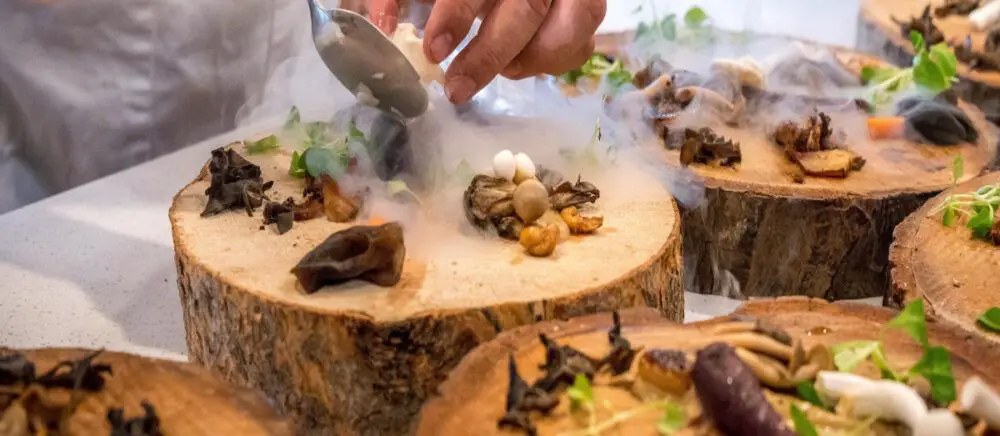
Purchase Equipment & Supplies
Once you’ve determined your menu and space requirements, it’s time to purchase the necessary equipment and supplies. This can include commercial-grade cooking appliances, food storage containers, packaging materials such as boxes or bags, uniforms for staff members, cleaning products — even a business phone line if needed.
Create A Concept & Branding
Develop a unique concept for your ghost kitchen and create branding to distinguish it from the competition. This can include a logo, color palette, website design, and even uniforms or packaging that communicate key elements of your brand.
Create A Marketing Plan
Research the best channels for reaching them, develop a budget, and create marketing campaigns that will capture their attention. The marketing campaigns allow you to reach out to potential customers, build brand recognition and ultimately drive sales.
Hire Employees
Once you’ve finalized your concept, menu, and marketing plan, it’s time to hire staff members for your ghost kitchen. Look for employees with restaurant experience as well as a positive attitude and an eagerness to learn. Make sure they understand the concept behind your business and are willing to work hard to make it successful.
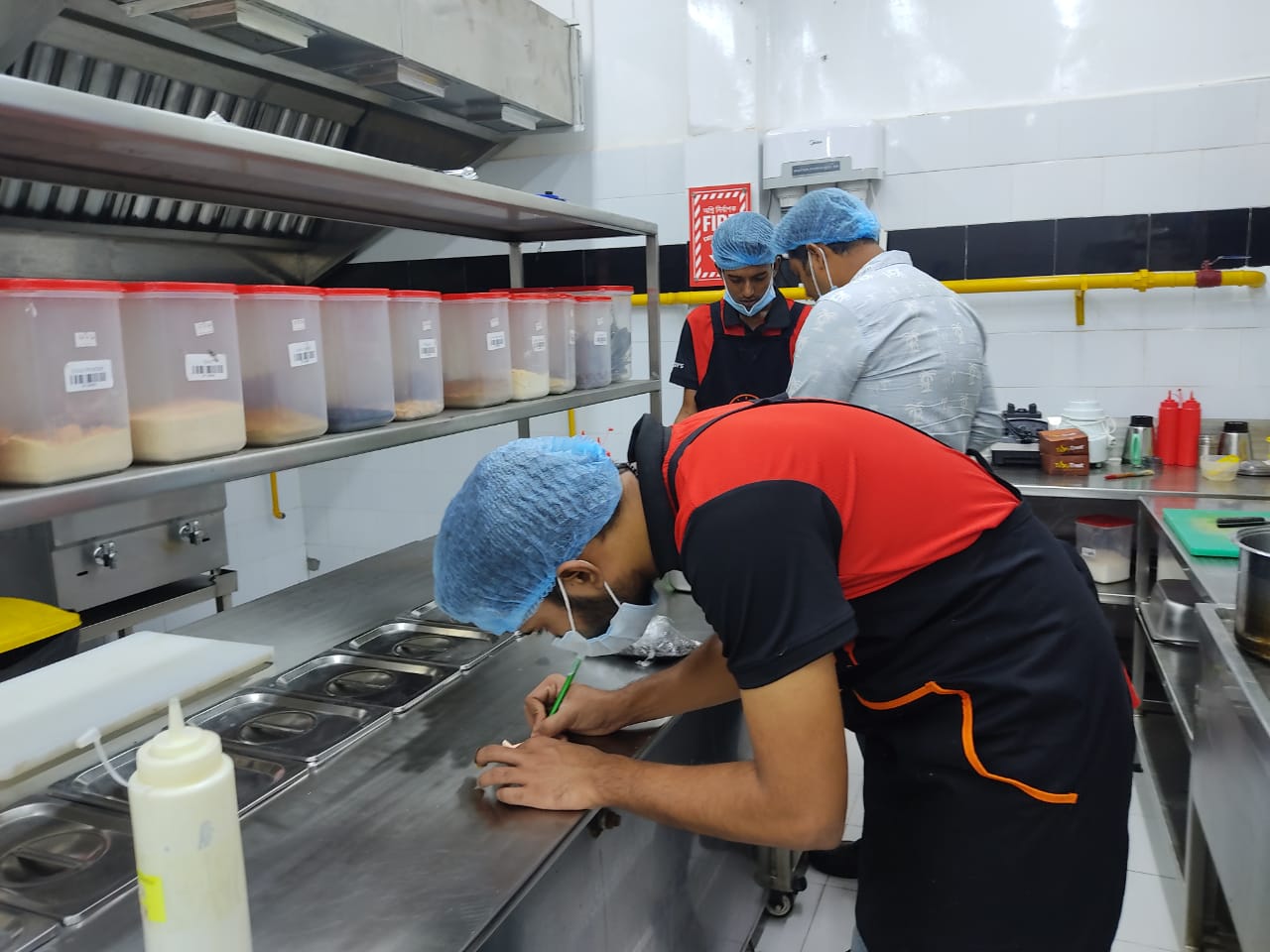
Establish An Online Presence
To establish a successful ghost kitchen, you’ll need to build an online presence. This includes creating a website and setting up social media accounts for your business. You may also want to consider partnering with food delivery services such as DoorDash or GrubHub so customers can easily find and order from your restaurant.
Create A Delivery System Or Team Up With A Food Delivery App
To ensure timely and accurate delivery of orders, it’s important to have a reliable delivery system in place. You can either hire an internal team or partner with a food delivery app like Postmates or UberEats. Make sure you understand the terms and conditions of any partnerships you enter into beforehand to avoid potential issues down the line.
Provide Excellent Packaging
The quality of the packaging materials you use and the customer service you provide can make or break your ghost kitchen. Use eco-friendly, insulated packaging to keep food hot and fresh during transport. Invest in disposable cutlery, napkins, condiments, sauces, and other extras that enhance the customer experience. Additionally, prioritize excellent customer service – prompt communication and quick resolution of issues are essential for gaining customers’ trust.
Choose a location for your ghost kitchen
Your next step is to decide on a suitable location for your business. When searching for a spot, consider factors such as access to customers (both local and online), proximity to other restaurants or businesses that could collaborate with you, parking availability, the safety of the neighborhood, and cost. Once you’ve found an appropriate location for your ghost kitchen, it’s time to create the right atmosphere. Your goal should be to create an inviting environment in which customers feel comfortable ordering from you [3].
Get the right tools and devices for your ghost kitchen
The first step to setting up a ghost kitchen is to make sure you have the right tools and equipment. This includes commercial-grade appliances such as ovens, stoves, refrigerators, freezers, and dishwashers. Your choice will depend on the type of food you will be serving and the amount of space available. You may also need to invest in restaurant-grade utensils such as knives, cutting boards, blenders, mixers, and more.
You’ll also need quality pots, pans, knives, cutting boards, and other utensils. Invest in high-quality plates and silverware so your customers can enjoy their meals with ease. Additionally, you may need additional items such as commercial cleaning supplies or food storage containers.
How Much Does A Ghost Kitchen Cost?
As with any business, the cost of a ghost kitchen can vary greatly depending on what type of restaurant you’re looking to start and the size. Startup costs for a ghost kitchen typically range from 20,000 to 50,000 dollars. This includes expenses such as purchasing equipment, food ingredients, licenses and permits, insurance premiums, rent or lease payments for a commercial kitchen space (if needed), hiring employees (if necessary), marketing and advertising costs, website development, and maintenance fees.
What Is A Ghost Kitchen In A Mall?
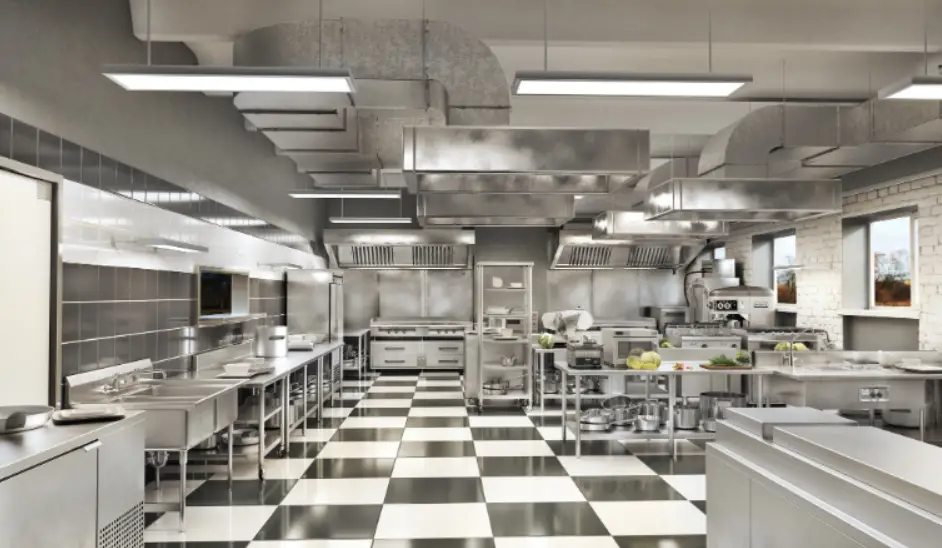
A ghost kitchen in a mall is a restaurant that operates without any physical storefront presence. Instead, these kitchens exist solely to take orders online or through delivery services such as DoorDash and UberEats. They are often located in the back or side of an existing restaurant, but can also exist in malls or shopping centers. Ghost kitchens offer restaurants an opportunity to increase their visibility while avoiding costly overhead costs associated with setting up a brick-and-mortar location.
The advantages of starting a ghost kitchen in a mall include lower start-up costs, reduced risk, and more flexibility. Compared to opening a traditional restaurant, the cost of leasing space at a mall and setting up a ghost kitchen is often much lower. Additionally, the shorter-term leases available at malls are more flexible than long-term leases associated with traditional restaurants [4].
The Future of Ghost Kitchens: Efficiency, growth, expansion?
Thanks to the increased availability of delivery services, ghost kitchens are becoming more popular as an efficient and economical way for restaurants to expand their customer base. A ghost kitchen is essentially a restaurant that doesn’t have a physical dining area – it only serves customers through food delivery services such as Grubhub or DoorDash. This business model allows restaurateurs to focus on their core strengths (i.e., preparing delicious meals) without having to worry about the additional costs associated with maintaining a physical space.
However, starting a ghost kitchen isn’t quite as simple as setting up shop in your garage and ordering some takeout containers. In order to be successful, there are certain steps you need to take to get your business off the ground given above.
Questions to consider before you open a ghost kitchen
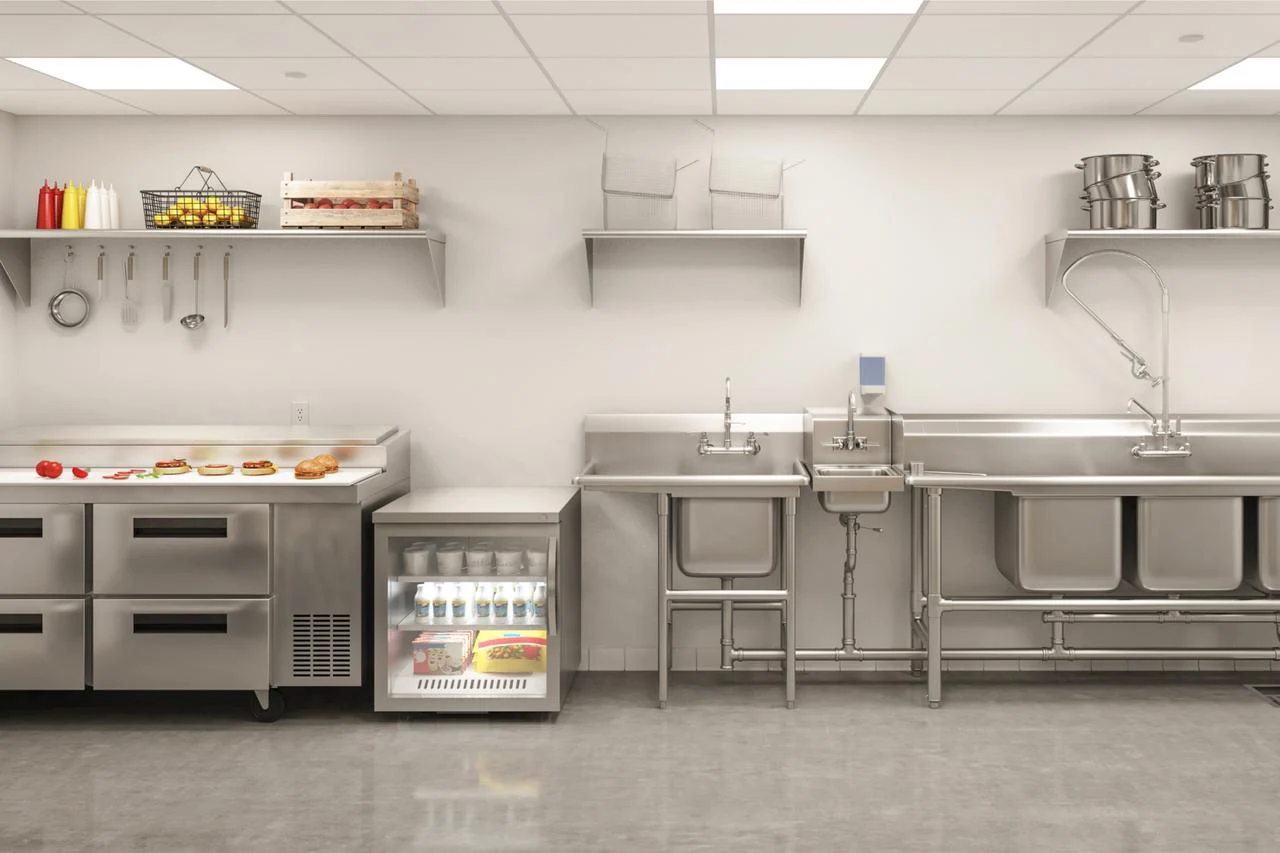
Where do your customers live?
One of the most important factors to consider when starting a ghost kitchen is understanding where your customers live. This will help you determine what delivery apps or services are available in your area, and which ones your target audience is likely to use. Knowing how far customers may be willing to travel for food can also help you decide on an ideal location for your business.
Is this a new concept?
You should consider if you have a new concept or menu that can help you stand out in the ghost kitchen market. Having a unique offering will make customers more likely to select your restaurant over others with similar menus. You should also consider how much space, equipment, and staff you’ll need to launch your concept successfully.
How will a ghost kitchen menu work with an existing menu?
If you already have an existing restaurant, you can use a ghost kitchen menu to extend your reach and make it easier for customers to order. You should consider how the two menus would complement each other, and if you need to modify any recipes or ingredients for better delivery performance.
How will a ghost kitchen affect my business model?
Transitioning to a ghost kitchen setup requires more than just changing your menu – it also means changing the way orders are taken and fulfilled. You’ll need to decide whether you’ll continue taking in-person orders or focus entirely on online orders, what delivery platforms you’ll work with, and how much stuff you’ll need for preparation and packing. All of these decisions must fit with your business model and operational goals.
What resources do you have to launch a ghost kitchen?
Running a successful ghost kitchen requires careful budgeting and planning in order to be profitable. It’s important to consider the cost of equipment, ingredients, delivery services, marketing, and staff before launching your new concept. You should also factor in any discounts or loyalty programs that can help drive more customers to your business.
Additionally, it’s helpful to understand what grants or other financial support are available for small businesses in your local area.
What will I owe in taxes?
Like any business, a ghost kitchen owner must comply with all federal, state, and local taxes. Depending on the type of restaurant you’re running and your location, there may be various taxes you need to pay. Make sure to research what licenses or permits you’ll need to launch your business legally.
By asking yourself these questions and doing some research into what’s required for a successful ghost kitchen venture, you should have a good idea of whether or not this is the right choice for your business.
How to Start a Ghost Kitchen: Step-by-Step Guide
Launching a ghost kitchen is a promising venture in the food industry, offering various cuisines without the need for a traditional dine-in space. To assist you in this endeavor, we’ve created a step-by-step guide with multiple columns to outline the key instructions and considerations for starting a ghost kitchen.
| Step | Procedure | Resources Needed | Time Required | Difficulty Level |
|---|---|---|---|---|
| 1 | Market Research and Concept Development | Market research tools, creativity | 2-3 weeks | Moderate |
| 2 | Business Plan and Budgeting | Business planning software, financial expertise | 4-6 weeks | Moderate |
| 3 | Legal Structure and Permits | Legal counsel, permits and licenses | 2-3 months | Moderate |
| 4 | Location and Kitchen Setup | Commercial kitchen space, equipment | 1-2 months | Moderate |
| 5 | Menu Development and Staffing | Chefs, menu development expertise | 1-2 months | Moderate |
| 6 | Online Presence and Delivery Partnerships | Website, delivery platform partnerships | 2-4 weeks | Moderate |
| 7 | Launch and Marketing | Marketing strategy, launch event | 2-4 weeks | Moderate |
Explanation of the Table:
- Step: Lists the sequential steps for starting a ghost kitchen.
- Procedure: Provides a brief description of what to do in each step.
- Resources Needed: Lists the necessary resources or expertise required for each step of the process.
- Time Required: Indicates the estimated time needed for each step.
- Difficulty Level: Rates the difficulty of each step, with “Moderate” indicating moderately challenging tasks.
By following these comprehensive instructions and considering the resources needed, time involved, and difficulty level, you can embark on the journey of starting your ghost kitchen and potentially tap into a growing market for food delivery and takeout.
FAQ
What is the difference between a ghost kitchen and a dark kitchen?
A ghost kitchen, also known as a virtual kitchen or cloud kitchen, is an off-site commercial food preparation and delivery service. They offer customers the convenience of ordering takeout without needing to leave their homes. On the other hand, a dark kitchen is a type of restaurant that only offers delivery services and does not have any physical dining space available to customers. While both are similar in that they provide delivery-only services, there are key differences between them.
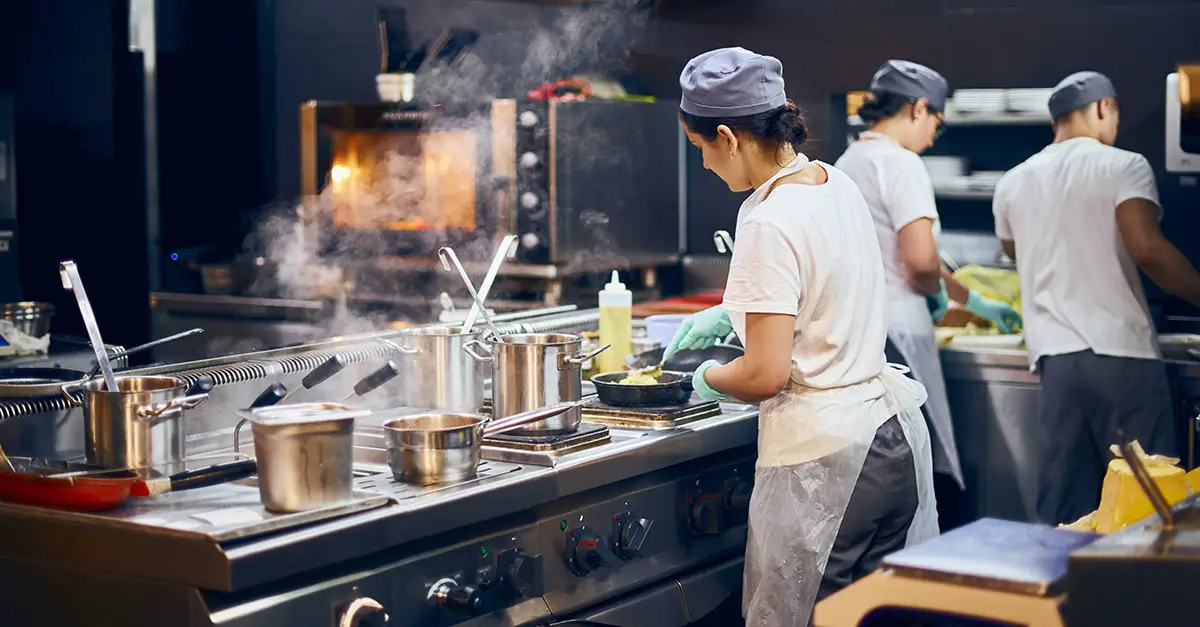
Ghost kitchens typically operate on smaller budgets with fewer staff members than traditional restaurants since they don’t need to maintain dining spaces or manage walk-in customers. This makes them more cost-efficient for owners looking to start up quickly without the overhead costs associated with setting up a full-service restaurant.
Dark kitchens, on the other hand, tend to have a larger operating budget since they require additional space for food production, storage, and delivery. Additionally, dark kitchen owners need to have more staff members on hand to manage orders and deliveries compared to ghost kitchen owners.
What are the costs associated with starting a ghost kitchen?
The cost of starting a ghost kitchen is highly dependent on factors such as location, size of the facility, and equipment needed. Generally speaking, there are three main expenses associated with setting up a virtual restaurant: rent or lease payments, utilities, and supplies. Rent or lease payments will vary depending on the location and size of your facility while utility costs will depend on the electricity and water usage required to operate your kitchen. Lastly, you will need to factor in the cost of purchasing equipment such as ovens, fridges, and food preparation tools.
What type of legal considerations should I keep in mind when starting a ghost kitchen?
When starting any type of business venture, it is important to familiarize yourself with local and state laws related to food preparation and handling. Additionally, all businesses must obtain licenses from their respective city or county government before they can legally operate. This includes obtaining permits for food handling and storage, as well as registering with the Department of Health or Environmental Protection Agency to ensure compliance with health codes.
What is a ghost kitchen vs a virtual restaurant?
A ghost kitchen and a virtual restaurant are similar in that both offer delivery services without the need for physical dining spaces. The key difference between the two is that a ghost kitchen focuses solely on food preparation while a virtual restaurant also features an online presence where customers can order their meals. This could consist of anything from having a website to listing their menu on third-party delivery apps such as Uber Eats or DoorDash.
How do you brand a ghost kitchen?
Branding is an important part of running a successful business, and it’s no different for ghost kitchens. The key to effective branding lies in creating a unique identity that resonates with your target audience. Start by determining the personality of your brand and crafting a cohesive message that can be used across all platforms, from social media to delivery apps.
Next, create visuals such as logos and artwork to represent your brand. This helps customers quickly identify your establishment when browsing through delivery options. Lastly, make sure you interact with customers on social media and respond promptly to inquiries or complaints on third-party delivery apps to maintain a positive customer experience.
Does a ghost kitchen make money?
Yes, a properly managed ghost kitchen can make money if you can attract and retain customers. Since one of the main advantages of this business model is the lower operating costs due to less reliance on physical spaces, it’s important to focus your resources on marketing and customer service. Additionally, be sure to monitor your expenses closely and look for ways to minimize waste to maximize profits. With careful planning and research, starting a successful ghost kitchen is possible – so don’t be afraid to take the plunge!
Is a ghost kitchen a good investment?
Yes, a ghost kitchen can be a great investment with the right amount of planning and research. As long as you have access to an existing food preparation facility and the necessary licenses, your start-up costs will be lower than that of a traditional restaurant. Additionally, this type of business model allows for more flexibility in terms of hours and staff size since most operations are composed of delivery drivers working on their own schedules. Finally, since more people are using third-party delivery apps to order food, there is potential for high profits if you can attract enough customers.
How do I choose the right location for my ghost kitchen?
Selecting the right location for your ghost kitchen is crucial. Consider factors like proximity to your target customer base, delivery radius, and the presence of popular food delivery apps in the area. Conduct market research to identify areas with high demand for your cuisine.
What kitchen equipment do I need to start a ghost kitchen?
The specific equipment you’ll need depends on your menu, but essential items typically include ovens, stovetops, refrigerators, freezers, prep tables, and commercial-grade kitchen utensils. Invest in equipment that suits your menu and production needs.
How can I optimize my online presence for a ghost kitchen?
To succeed in the ghost kitchen business, establish a strong online presence. Create a user-friendly website or partner with popular food delivery apps. Invest in professional food photography, create an enticing online menu, and actively engage with customers through social media and online reviews.
What are the best practices for menu development in a ghost kitchen?
When developing your ghost kitchen menu, focus on items that travel well, have a broad appeal, and fit within your kitchen’s capabilities. Streamline your offerings to reduce operational complexity and ensure consistency in quality.
How can I efficiently manage orders and delivery logistics in a ghost kitchen?
Effective order and delivery management are essential for a ghost kitchen. Utilize order management software to streamline orders, maintain accurate inventory, and coordinate deliveries. Consider partnering with third-party delivery services or establishing your delivery team for efficiency.
What strategies can I use to market my ghost kitchen effectively?
Marketing your ghost kitchen is vital for attracting customers. Leverage digital marketing, including social media advertising and search engine optimization (SEO). Offer promotions and discounts, collaborate with food influencers, and gather customer feedback to continually improve your offerings.
How can I ensure food safety and quality in a ghost kitchen?
Maintaining food safety and quality standards is paramount. Train your staff in proper food handling and hygiene practices. Implement rigorous quality control procedures, conduct regular kitchen inspections, and monitor food storage and preparation temperatures.
What are the key considerations for managing staffing in a ghost kitchen?
Managing staffing efficiently is crucial for cost control. Determine your staffing needs based on order volume and operational hours. Consider cross-training employees to handle multiple tasks and explore flexible labor arrangements to adapt to demand fluctuations.
How can I adapt to changing consumer preferences in the ghost kitchen industry?
Consumer preferences in the food industry can evolve rapidly. Stay updated on culinary trends, gather customer feedback, and be willing to adjust your menu and marketing strategies accordingly. Adaptability is key to long-term success in the ghost kitchen business.
Useful Video: How do I Start a Ghost Kitchen
Conclusion
Starting a ghost kitchen can provide an effective way to expand existing restaurant operations or launch the first outlet of a new concept. By carefully evaluating your options, selecting the right technologies and partners, and staying organized throughout the process, you can ensure that your ghost kitchen is set up for success from day one. With an eye toward profitability and customer satisfaction, you’ll be well on your way to creating a profitable virtual restaurant venture.
References
- https://theconversation.com/whats-a-ghost-kitchen-a-food-industry-expert-explains-163151
- https://www.ncr.com/blogs/restaurants/ghost-kitchen-pros-cons
- https://www.restaurantware.com/blog/post/checklist-for-opening-a-ghost-kitchen/
- https://pocketstop.com/blog/how-ghost-kitchens-are-changing-shopping-malls/





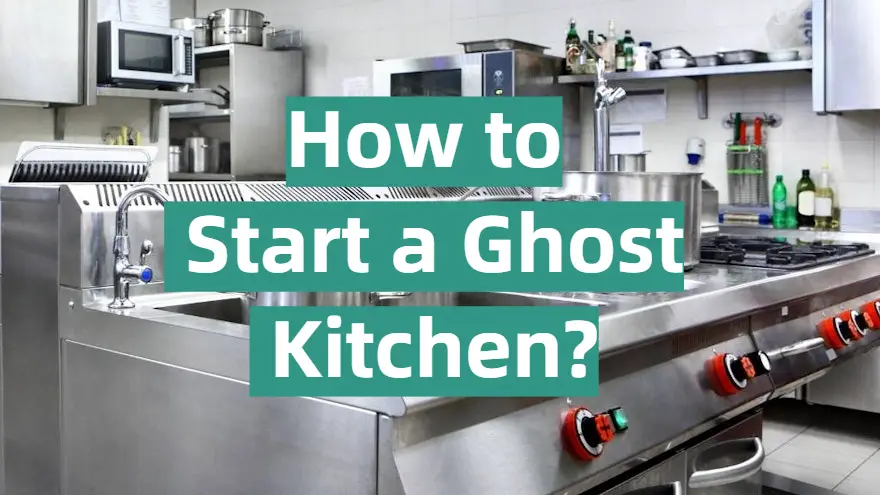





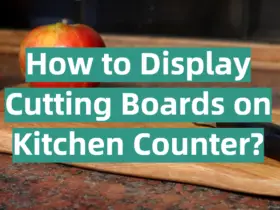

Leave a Reply